Rocking the runway – putting your best foot forward – particularly during this wobbly situation
How many (up-and-coming) fashion designers have you had the chance to speak to? Well, in my own network, there are fewer than five who are fashion designers. But since I’m always curious to learn, especially with the present situation, I decided to reach out to a New Zealand-based fashion design graduate – looking to step out into the industry soon. Hilary Gittings (pictured), a 20-something, spilled the details on this.
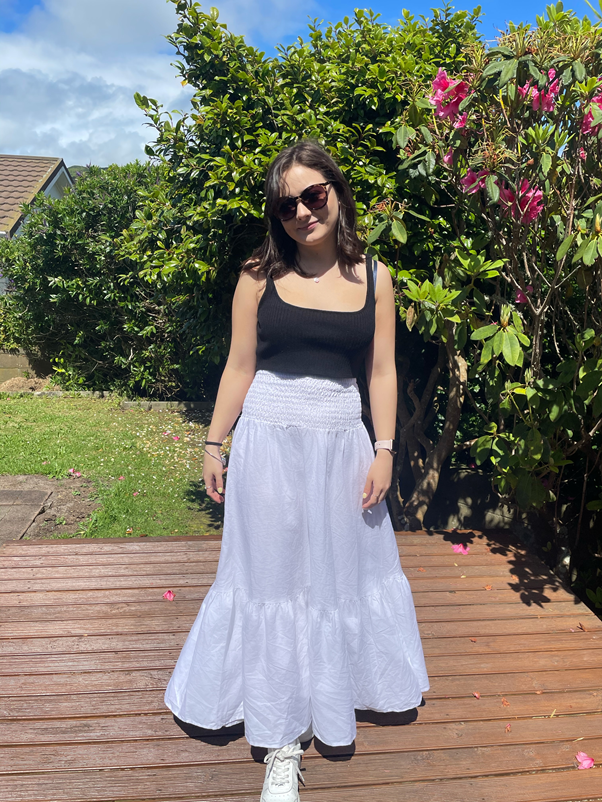
Could you talk to me about your ‘Issued Utopia’ collection? It seems to me like your designs are catered to the weather in New Zealand?
[As per ‘thehilarystudios’ Instagram page], this is the blurb I had for my collection: ‘Issued Utopia’ is a ticket to finding reassurance and happiness, designed in an attempt to create utopias for those who are lost in the in-between. With the use of patterns and layering techniques, each garment implements [a] modular design which can be utilised to create an individualised look. ‘Issued Utopia’ is a step in the right direction for creating our own utopias which pave the way for fashion’s future possibilities. Yes, I had New Zealand weather very much in mind as this is an Autumn/Winter collection, so I had to use some wools and warmer fabrics to cater to those seasons. I was inspired by Chanel’s Fall 2019 Ready-to-Wear collection. I was also designing based on what I would wear on myself and what would suit Wellington weather, which is always changing.
I designed this collection during our New Zealand lockdown and wanted to create something that provides reassurance and comfort. I wanted to be able to ‘issue’ this to people through the form of clothing. The use of a monochrome colour scheme allows for the wearer to assimilate these pieces into their already established wardrobe.
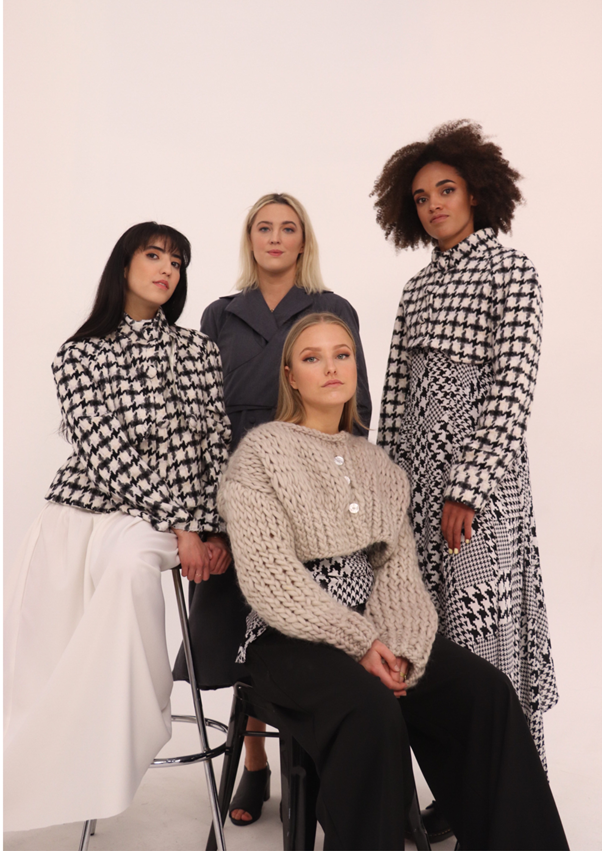
Almost the entire ‘Issued Utopia’ collection
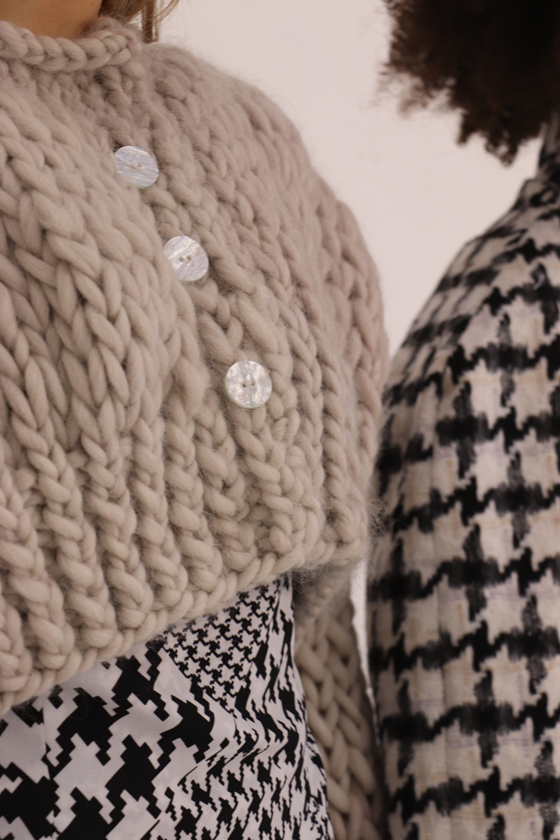
(Left): Reform Knit with the Elation Singlet and the Solace Pant
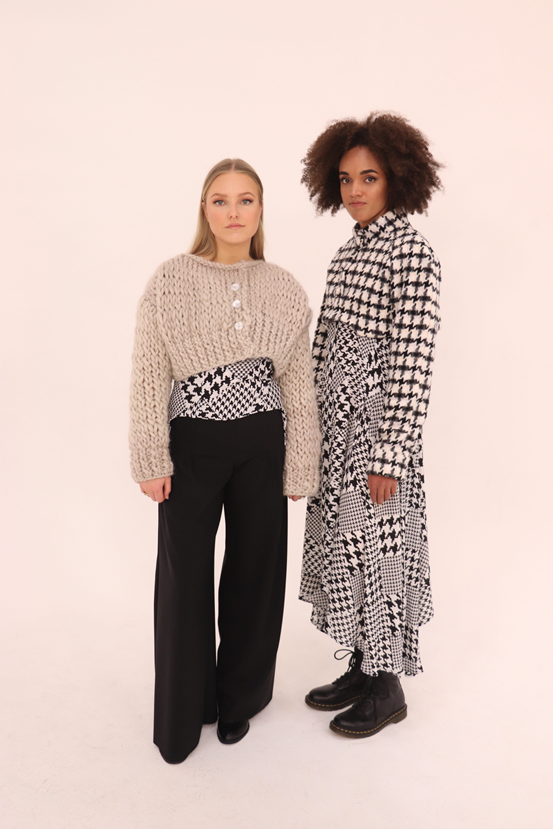
(Right): The Merriment Jacket with the Attained Dress
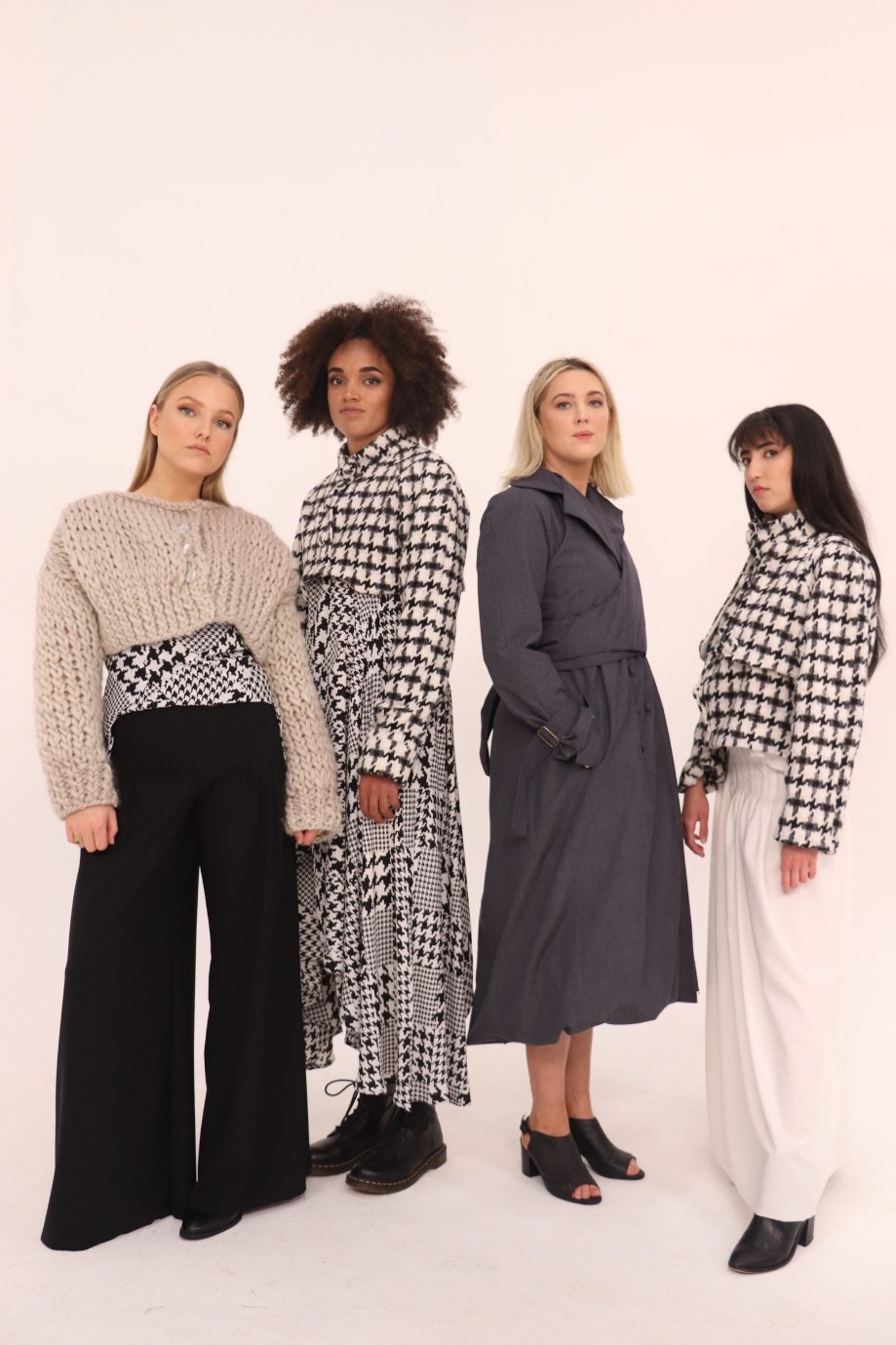
Second from right in the row: The Assured Trench
Last in the row: The Contentment Jacket with the Flurry Skirt
Talk to me about the materials you use(d). What about the sewing machine?
Fabrics that I used range from cottons, wool, georgette, silk to polyester. I tried to use as many natural fibres as possible but it is harder when I am on a student budget. At university we had industrial sewing machines and overlockers. I would use the Juki industrial [sewing machine] and overlocker. At home, I have and would use the domestic Brother sewing machine as well as the domestic overlocker (pictured).
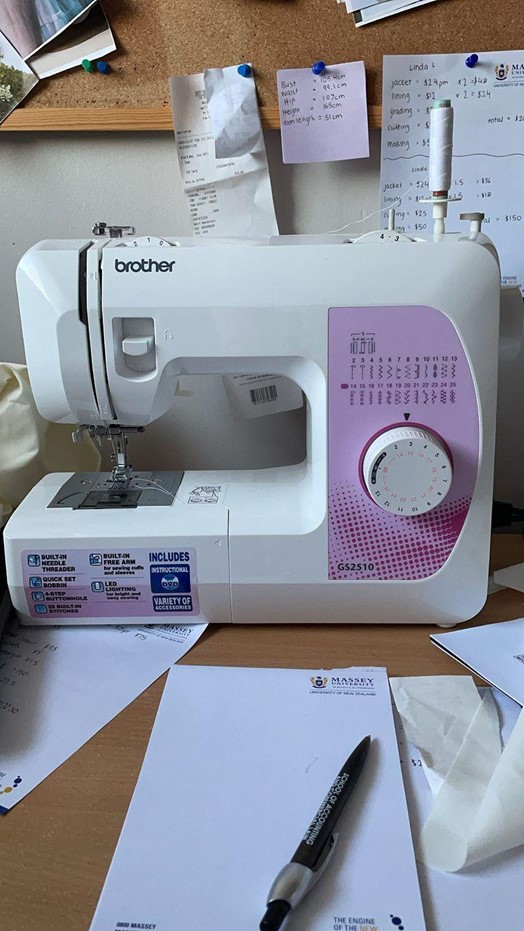
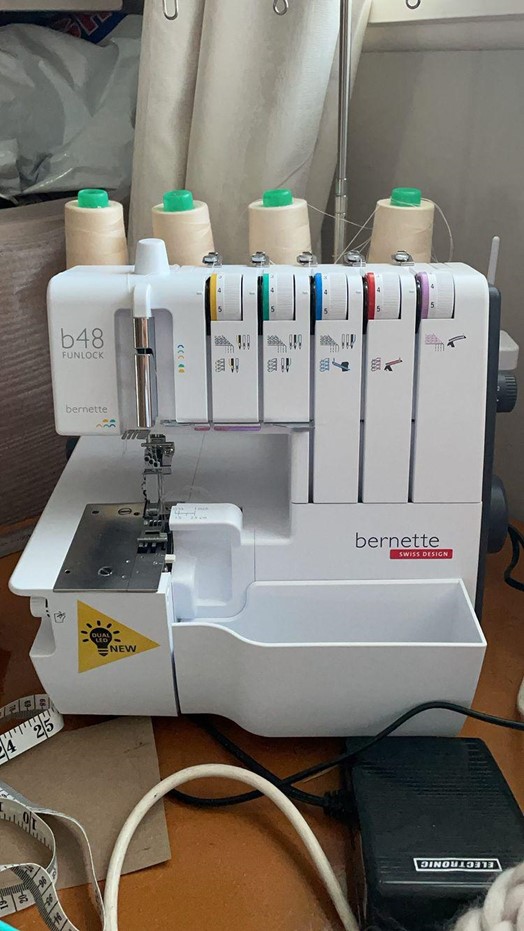
How long did you take to design these? Could you elaborate? In terms of the creative process – from start to finish?
I guess it took around three months, but give or take because when we are constructing, the designs often change when they are coming to life. The process first starts with research and ideation around what I wanted to base my collection on and then forming ideas of how I can transform my aims into garments. Once I have many pages of initial ideas and sketches, I can start developing and progressing which of the designs and which pieces work the best. From here I develop further and refine my ideas [while] making sure all of my garments flow as one – as a collection of pieces. I then pattern make these designs and sample pieces to see if all are practical and functional. These 10 pieces make up my ‘Issued Utopia’ collection.
What would you say to the misconceptions about being a fashion graduate/in the fashion industry?
A common misconception in the fashion industry is that designing is the easy part. Designing a collection takes a lot longer than people think. [As a designer myself], I relate my designs to the concepts of social and environmental factors. Being creative can also be hard, especially during lockdown. It was hard to find motivation to be creative and be disciplined to set aside time for designing.
What about the challenges as a fashion graduate/stepping into the industry soon?
It’s been a struggle transitioning from being a student to graduate. [Bearing in mind the current situation], there are very few jobs in our industry, especially for a graduate with a slim amount of experience, without anyone giving chances to fresh graduates. At university, there are very few chances of meeting with names in the industry, so it’s all up to us to make our own way. We graduate with all the relevant skills; it is just the lack of real-world experience.
Do you have anything else to add?
I loved designing my final collection [as part of the requirement to graduate] although very hard at some points due to the strange year we have had. It is a great feeling of accomplishment seeing all my designs come to life and walk down the runway.
Note: The interviewee, who is based in Wellington, did a design course that is 100% coursework-based.
Update (15/1/2021): The Flurry Skirt also comes with a Flurry Blouse, otherwise known as The Flurry Set.
Update (17/1/2021): As shown hanging (without a model modelling the piece), there is a separate black dress that is a part of the collection.

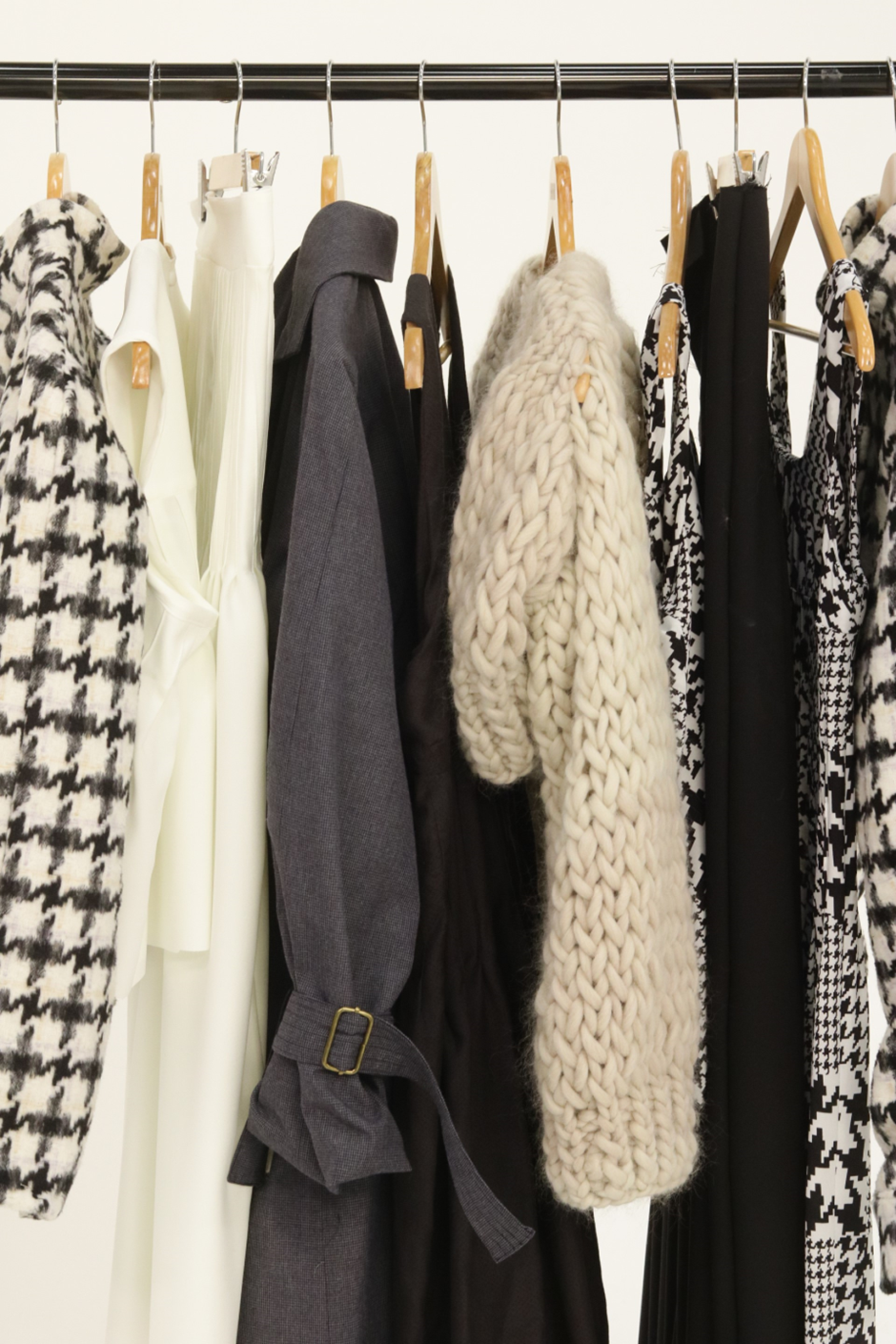














Showing 0 comments